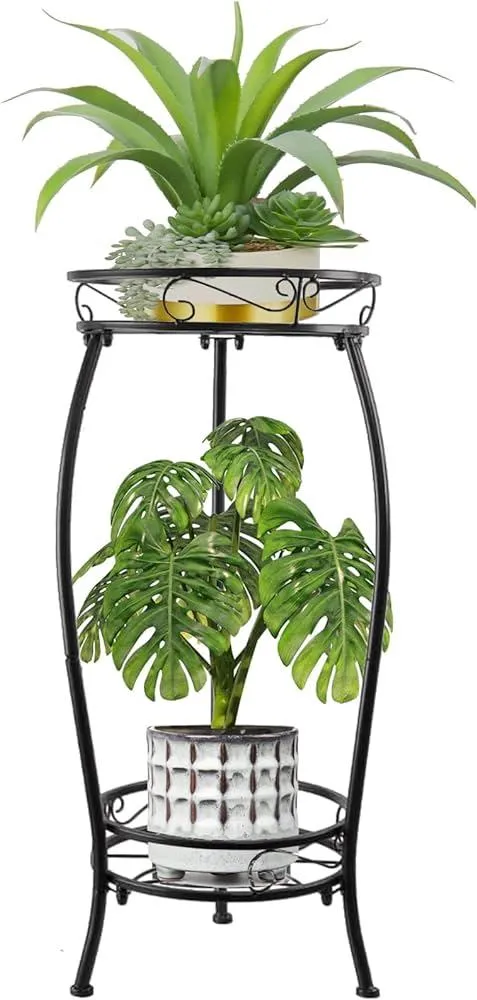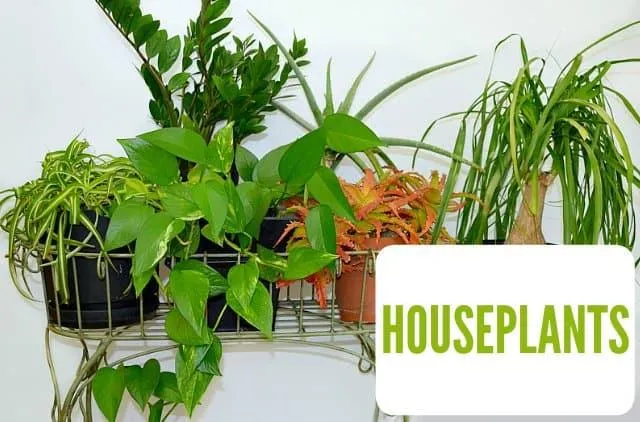The Basics of Hanging House Plants – A Complete Guide
Let me start by answering the basic question – what exactly are hanging house plants? Well, simply put, they’re plants that you hang from the ceiling or walls in your home rather than placing them on shelves or the floor. From my experience decorating homes over the years, hanging plants are a fun and unique way to add some greenery to your space. They kind of fill out empty corners and airy areas in a room.
Choosing the Right Hanging Plant
So with that in mind, sort of the first step is picking out which hanging plant is best for your space. Here are some of the most popular options to consider:
- Pothos – Also known as devil’s ivy, pothos is one of the hardiest hanging plants out there. It’s super forgiving if you forget to water it for a bit. The trailing vines give it a lovely full look.
- English Ivy – Similar to pothos, English ivy thrives whether it’s in bright light or low light. It has cute rounded leaves and will grow long tendrils. Just be wary of pets as it is toxic.
- Philodendron – With its heart shaped leaves, philodendron comes in many varieties like brasil, micans, and neon. They’re low maintenance and look stunning hanging in a basket or pot.
- Spider Plant – Those grass-like green and white leaves dangling down make spider plants one of the prettiest hanging options, I’d say. Plus, it produces baby plantlets on the ends of its foliage.
- Purslane – For a super full, lush look, go with purslane. But be warned, it grows crazy fast so you’ll need to contain it! The succulent-like leaves give it such a unique texture too.
I’d basically recommend choosing plants based on your space – how much light it gets, the temperature, etc. Pothos, ivy and philodendrons adapt to a wide range of conditions. Spider plants and purslane prefer brighter spots.
Finding the Right Pot
Alright, so now that you’ve selected your hanging plant, the next step is getting a pot or planter to put it in. Here are some things to consider when plant pot shopping:
Size – You’ll want a container that’s proportionate to the plant but also allows room for growth. Crowding roots can stunt them.
Material – Terracotta and ceramic pots work great but can be heavy when hung. Plastic or woven fiber options are much lighter.
Drainage Holes – Essential! You don’t want soggy roots. At least two holes in the bottom are recommended.
Hanging Hardware – Make sure to get a pot with integrated handles, loops, or hooks already attached for suspension. Jute, coir and metal work well.
Aesthetic – Pick a color and style that fits your home’s vibe. Macrame hangers are all the rage lately for that boho feel.

When I’m plant pot shopping, I kind of get excited browsing all the neat designs. Sometimes I’ll see one that just “speaks to me”, you know? The right pot elevates any hanging plant.
Hanging Solutions
Alright, so let’s talk hanging solutions – how exactly do you get that plant pot up in the air? Here are the main options:
- Chain or Jute Rope – Classic and stylish. Just attach one end to the pot and the other to a hook in the ceiling or beam.
- Macrame Hangers – Knotted cotton or jute cords create a woven loop to suspend pots. Hipsters love these for sure.
- Track Systems – Attach a stationary hook to the ceiling, then slide plant pots along an adjustable hanging track.
- Shepherd’s Hook – Drive a tall, arched hook into the wall and loop rope or chain over the curve to hang pots.
- Ceiling Hooks – Screw sturdy hooks directly into ceiling beams, rafters, or wooden panels.
No matter which system you go with though, the number one thing is making sure whatever’s holding that weight up is securely attached! Like, I don’t advise relying on command strips, dude. Pick an installation method based on your space and warranty it’s not crashing down, if you know what I mean. Safety first and all that!
Caring for Hanging Plants
Alright, so you’ve set up these cute little plants artfully around your place – now comes the fun part of keeping them happy and healthy! Here are some care tips:
Watering – Check soil moisture weekly by sticking your finger in. Water thoroughly when the top inch is dry. Be sure excess drains out the bottom.
Fertilizing – During spring and summer, use a diluted liquid houseplant fertilizer every 2-4 weeks. Skip in fall/winter when growth slows.
Light – Most hanging plants thrive in medium to bright indirect sunlight. Rotate pots occasionally so all sides get light exposure.
Pruning – Trim off any unsightly or dead growth with clean pruning shears. This encourages bushier new growth.
Pest Control – Check regularly for signs of bugs and treat as needed with neem oil or insecticidal soap. Control measures are key to avoiding infestations.

Repotting – Only do this once plants are root bound or show signs of pot being too small. Go up just 1-2 inches in container size.
The secret is really just learning each plant’s likes and needs. With a bit of TLC, your hanging plant buddies will be looking amazing for seasons to come! Lemme know if you have any other plant questions – I’ve got stories for days on this stuff, I swear.
Styling Hanging Plant Displays
Alright, so now that you’ve got these beauties potted and hanging, let’s chat display styling. How do you arrange multiple plants artistically? Here are some ideas:
– Cluster 3-5 matching pots together from the same point of suspension for a curated “cocoon” effect.
– Alternate heights by hanging pots at varying lengths on one long chain or rope.
– Hang pots singly from individual hooks spaced around a window or architectural feature.
– Use multiple macrame hangers of varying lengths coming down from one anchor point.
– Group pots of different textures, colors, and sizes randomly for a maximalist jungle vibe.
– Line up a row of pots along a decorative track hanging across an empty wall space.

– Get creative with LED string lights woven through the foliage for a magical after-dark look, if you’re feeling fancy!
Really just play with compositions until you find an arrangement you think is neat-o. Let the plants be the artwork, amirite? Often less is more with these types of displays too – too many plants can basically look messy.
Well there you have it folks – my full rundown of all things hanging plants! Hopefully these tips sort of covered everything for someone just starting out. Does anyone have any other plant questions? I’d be happy to babble on some more about this green-thumb hobby of mine. Let me know if the care instructions made sense or if you need anything clarified. Alright, gotta run but keep on growing, y’all!
Factors to Consider When Choosing a House Plant to Hang
| Plant Type | Light Needs | Watering Needs | Good For |
|---|---|---|---|
| Pothos | Low to medium light | Let soil dry out between waterings | Bathrooms or areas with low light |
| Philodendron | Medium to bright light | Water when top inch of soil is dry | Kitchens or living rooms |
| Spider Plant | Bright, indirect light | Let soil dry out between waterings | Any room but wilts in low humidity |
| English Ivy | Low to bright light | Water when top inch of soil is dry | Any room to trail or climb |
| Wandering Jew | Medium to bright light | Let soil partially dry between waterings | Bathrooms or kitchens for low light |
FAQ
-
What are some good tips for hanging plants?
Basically there’s a bunch of things to keep in mind when you hang plants. Firstly, make sure to use plant hangers or hooks that can support the weight – you don’t wanna take any chances of things coming crashing down! Also, position them in spots that get the right amount of sunlight for that plant type. Maybe put smaller plants higher up if you want a nice arrangement.
-
Will plants grow as well when hanging versus sitting on the ground or a plant stand?
Plants can certainly grow nicely while hanging. At the same time, their growth may be somewhat more limited compared to being on the ground since they don’t have as much space for their roots. As long as you provide adequate care like watering, fertilizing, and pruning, most hanging plants will thrive. It’s mainly an issue for really large or vigorously growing kinds.
-
How often should hanging plants be watered?
The frequency of watering really depends on the plant type and conditions. As a general guide, check the soil every few days – you want it to dry out somewhat between waterings. Kind of stick your finger in to test the moisture level. It takes some observation to get a feel for each plant’s exact needs. Don’t want the soil to stay soggy wet or totally dry out. Perhaps keep a journal of your routines to learn their patterns.
-
Is it better to use a hook, chain, or rope to hang plants?
All three methods can work well for hanging plants. Chains and ropes seem best at allowing adjustment of heights over time unlike fixed hooks. But hooks offer a more simple and potentially less noticeable means of support. Sturdy chains may handle the fattest containers. In any case, use strong hardware appropriate for the plant weight. Always double check attachments periodically too since deterioration can occur on hardware outdoors over time.
-
What is the best height for hanging plants?
The right height basically depends on the specific setting and what works best visually. As a rough guide, smaller plants can be hung fairly high, perhaps 6-8 feet, while bigger varieties with larger foliage look awesome around 3-5 feet. Additionally, consider access needs – you may want pots within reach for easy care. Placing them too low runs the risk of damage from kids or pets at home. Might take some trial and error to decide the stunning spot!
-
How do I care for hanging plants over winter?
Caring for hanging plants throughout the winter takes some extra steps. First off, bring any tropical varieties indoors before the nights turn chilly. As for outdoor hanging plants, give them a final watering before frost. You may also want to bring pots in if we get an unusual cold snap. Additionally, clear away dead growth and use winter protection like mulch if temperatures will be slipping below freezing. With some TLC, many containers can look gorgeous all season long!

-
Is it difficult to care for hanging baskets?
Hanging baskets are likely one of the better options for beginners because they’re not as demanding as some other types of containers. Despite that, maintaining them does take regular attention – way more than just planting and forgetting. You basically need to water, fertilize, and deadhead spent blooms on a schedule. Paying attention prevents them from getting stressed, leggy, or untidy. With the right species and a bit of effort, hanging baskets can add vibrant color all season without too much trouble.
-
What are some low maintenance hanging plants?
If you want nice looking hanging plants but don’t want a ton of work, some good choices include English ivy, pothos, philodendron, or parlor ivy. These guys are virtually Amazing – they can thrive with relatively small amounts of water and fertilizer. Spider plants, Swedish ivy, and licorice vines also grow quickly to fill out containers with minimal care. For blooming plants, petunias, wave petunias, or bacopa won’t make you spend hours fussing over them to look good.
